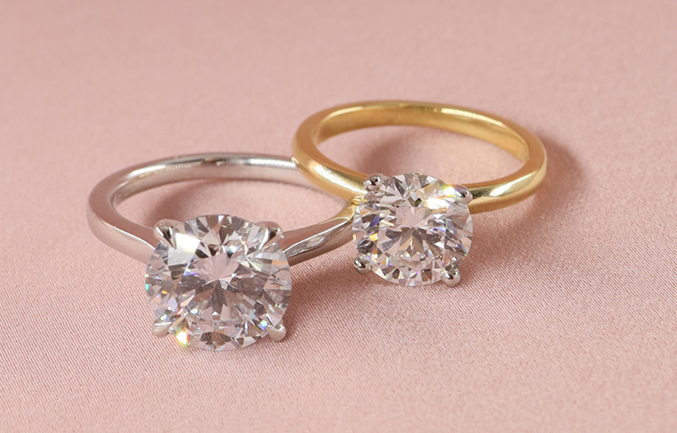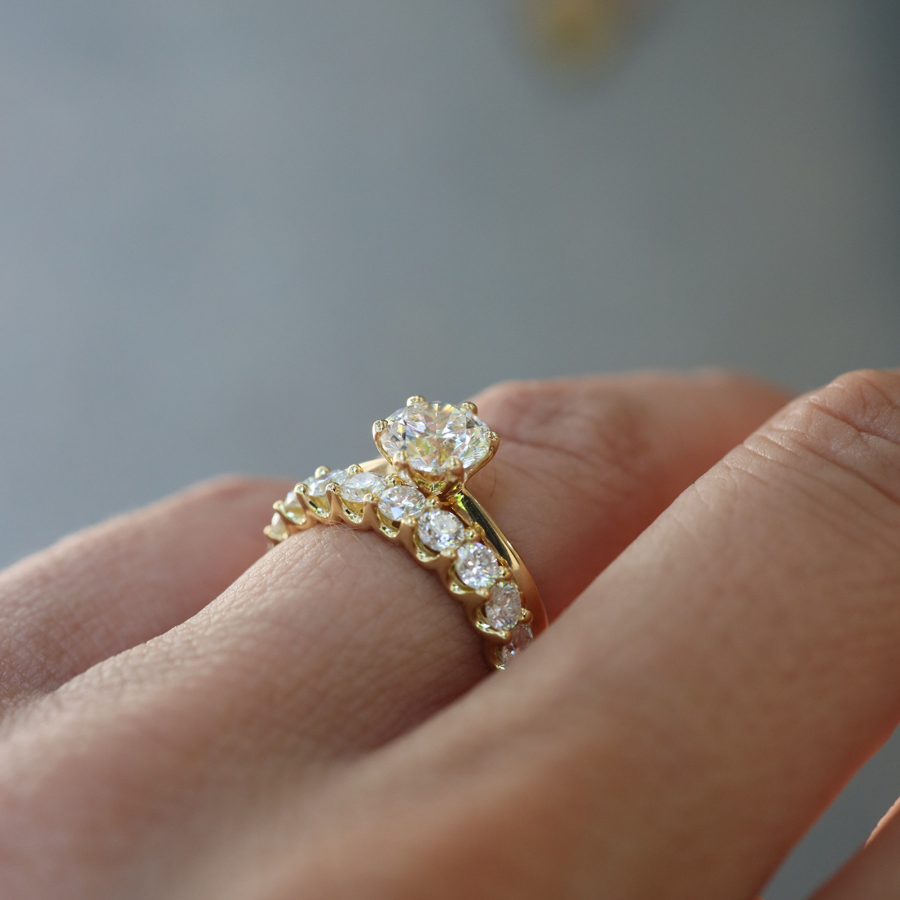05/22/2023


Four prongs mean less metal on the diamond, letting the center stone be the star of the show.
Four prongs can give a diamond a more “squarish” look, making it a good choice for princess cut, cushion cut, and other diamonds that are square or rectangles.
Smaller diamonds (less than a half carat) can be dwarfed by prongs, so four prongs might be a good design choice.
Four prongs don’t hold a diamond as securely in place as six prongs.
Four prongs don’t offer as much protection for the girdle as six prongs.

Myth: Four prongs allow more light to enter the diamond, giving the stone more sparkle.
Fact: A diamond’s sparkle is determined by the quality of its cut, not by the number of prongs in a setting.

The Tiffany six-prong setting, introduced over 125 years ago, is the iconic image of the engagement ring. This look helped popularize the giving of diamond solitaire rings for engagements, and it remains a favorite, and often imitated, style.
Six prongs hold a diamond more securely in place. If a prong is accidentally sheared off in a four-prong setting, the center stone can easily fall out (and get lost). If a prong breaks in a six-prong setting, chances are the center stone will remain firmly in place.
Six prongs offers better protection to the diamond’s girdle than four prongs.
Six prongs can make a round shaped diamond or gemstone look rounder.
Diamonds smaller than a half a carat may be overshadowed by all the prongs.